Krishna’s Unconditional Love: A Servant’s Journey – Sacinandana Swami
→ Dandavats
Read More...
Websites from the ISKCON Universe
In a recent initiative that merged health care with spiritual support, Bhaktivedanta Manor’s Devotee Care Office hosted a groundbreaking Cancer Workshop. The event, which Mahimarnava Dasa orchestrated in collaboration with One Vision NPO and Macmillan Cancer Support, sought to address a growing need within the devotee community: comprehensive cancer care. Inspired by the increasing number […]
The post Bringing Holistic Cancer Care to the Devotee Community appeared first on ISKCON News.
Nectar Talks, a podcast hosted by devotees at ISKCON Alachua, has launched its second season following the success of its first. The podcast is dedicated to capturing and sharing the essence of devotees’ spiritual journeys. In a recent conversation with ISKCON News, Amrita-keli Dasi, one of the podcast hosts, shared some exciting updates about the […]
The post Nectar Talks Podcast Returns with Enhanced Experiences in Season Two appeared first on ISKCON News.
As part of the 2024 Bhadra Purnima campaign, the Badrinath/Haridwar Yatra distributed more than 150 Srimad Bhagavatam sets over a five-day period. It was yet another wonderful opportunity to reconnect, rejuvenate, and recommit to exploring one of the many channels that Srila Prabhupada continues to provide so that we can participate in his most cherished […]
The post Hundreds Joined Bhadra Purnima 2024 Event in Badrinath/ Haridwar appeared first on ISKCON News.
Devotees successfully sharing in Hong Kong. The Damodara Outreach Program (DOP), initiated by the Congregational Development Ministry (CDM) in 2004 in Kuala Lumpur, Malaysia, aims to spread the teachings and love of Lord Damodara during the sacred Kartik month, which spans from October 17 to November 15 in 2024. This initiative has grown from a […]
The post CDM’s Damodara Outreach Program Shares Kartik Resources with Devotees Worldwide appeared first on ISKCON News.
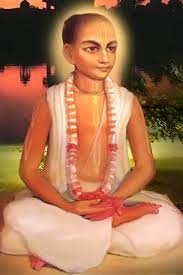
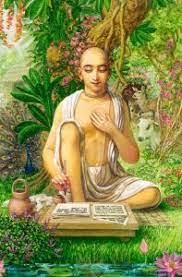
Narottama Dasa Thakura wrote many devotional songs about the spiritual master, the Devotees, devotional service, the six Goswamis, Gaura-Nityananda and Radha-Krishna. Although composed with sweet melodies in simple Bengali language, Narottama Dasa’s songs give shastric siddhanta and devotional inspiration.
Srila Prabhupada often sang these bhajanas. Considering them non-different from Vedic shastra, He quoted them in his Bhagavatam lectures. Prarthana and Prema-bhakti-chandrika are Narottama’s most famous works.
The following excerpt comes from Prema-bhakti-chandrika: “Radha and Krishna are my goal in life and death, and They are the masters of my breath. Performing my bhajana only for Them, I rise and fall in the ocean of prema. I pray that I can always maintain this conception within my heart as my highest ideal.
“Let me serve the lotus feet of Radha-Govinda. Let my mind be filled with dedication to Their divine forms that defeat the beauty of Cupid and Rati. With a straw between my teeth I fall at Their divine feet and present my humble appeal: ‘0 Kishora-Kishori! 0 son of Nanda Maharaja-Shyamasundara! And 0 daughter of King Vrishabhanu, Shri Radha. You enchant even Hari, and Your bodily complexion is the color of a golden lotus. 0 Krishna, with a bodily colour like an indranila gem (blue jewel), Your beauty mocks Cupid.
‘0 topmost dancers Shri Radha and Shri Krishna-please dance within my mind. 0 You whose beauty increases the charm of Your dazzling ornaments, day and night I only wish that I shall go on singing Your glories in great ecstasy.”
Narottama Dasa serves Shrimati Radhika as Chamaka-manjari. His samadhi is in Radha Gokulananda’s Temple courtyard.
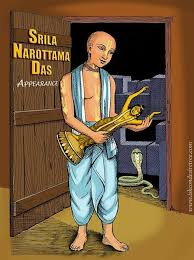
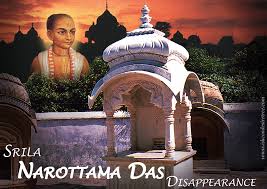
https://www.facebook.com/media/set/?vanity=indradyumna&set=a.10226719396594000
Кришна как-то сказал Махарадже Нанде: “Мой дорогой отец, ведь мы живем не в городах, не в селеньях и не деревнях. Мы, обитатели лесов, всегда живем в лесах и на холмах”.
Сегодня окунулись в атмосферу священного леса Бихарван, который все еще остается тем же Вриндаваном, каким он был много лет тому назад. Здесь живет около тысячи коров, которые, по словам наших Ачарьев, родственницы коров сурабхи в духовном мире. Вслед за чудным киртаном, исполненным глубокой преданности, последовало невероятно увлекательное занятие. Мы принялись гладить, обнимать и кормить множество великолепных ласковых коров и их телят. Этот день позволил нам чуть-чуть соприкоснуться с тем, что так дорого Господу!





Krishna once said to Nanda Maharaja, “My dear father, our home is not in the cities or towns or villages. Being forest dwellers, we always live in the forest and on the hills.” Today, we experienced the atmosphere of the sacred forest of Biharvan which still retains the ambience of what Vrindavan was like many years ago. It is home to a thousand cows which our acharyas tell us are cousins of the surabhi cows in the spiritual world. A lovely kirtan filled with deep devotion was followed by an incredibly captivating class. We then had the joy of petting, hugging, and feeding many gorgeous and affectionate cows and their calves. It was a day that offered us a glimpse into that which is dear to the Lord!
Krishna once said to Nanda Maharaja, “My dear father, our home is not in the cities or towns or villages. Being forest dwellers, we always live in the forest and on the hills.” Today, we experienced the atmosphere of the sacred forest of Biharvan which still retains the ambience of what Vrindavan was like many years ago. It is home to a thousand cows which our acharyas tell us are cousins of the surabhi cows in the spiritual world. A lovely kirtan filled with deep devotion was followed by an incredibly captivating class. We then had the joy of petting, hugging, and feeding many gorgeous and affectionate cows and their calves. It was a day that offered us a glimpse into that which is dear to the Lord!Показать переводи ещё 94
Sundar Caitanya Goswami offering flowers to Srila Prabhupada’s murti. Mauritius recently commemorated the 49th anniversary of Srila Prabhupada’s historic arrival in the country in 1975 with a week of celebrations that honored his legacy as well as set the stage for next year’s highly anticipated 50th-anniversary event. From heartfelt gatherings at Krishna Balaram Mandir to […]
The post Mauritius Marks 49 Years Since Srila Prabhupada’s Arrival appeared first on ISKCON News.
The Better India platform shares positive stories happening across India “uncovering the tales of everyday unsung heroes, community change-makers, groundbreaking innovations, and remarkable ideas often overlooked by mainstream media.” One of its recent spotlights was focused on the city of Chennai which is posed to become “India’s first gender-inclusive city, thanks to a Gender Lab […]
The post Chennai has Emerged as India’s Leading City for Women’s Safety appeared first on ISKCON News.
The annual World Holy Name Festival (WHNF), organized by the ISKCON Kirtan Ministry, concluded its 2024 edition with great success, uniting temples and devotees from across the world. This festival, observed from September 17 to September 23, celebrates Srila Prabhupada’s transcendental journey to the West, which marked the beginning of ISKCON’s worldwide mission to spread […]
The post WHNF 2024: Chanting for Global Love and Peace appeared first on ISKCON News.
Diary of a Traveling Sadhaka, Vol. 20, No. 19
By Krishna Kripa Das
(October 2024, part one)
Albany and New York City
(Sent from Brooklyn, New York, on October 19, 2024)
Where I Went and What I Did
For the first four days of October I helped my sister, Karen, and her partner, Victor, clean out my mother’s place so her house could be sold. For the first three of those days I stayed at Viraha Bhavan, Satsvarupa Dasa Goswami’s ashram, helping his caretakers in their services to him. I found and photographed about 60 letters I had written to my mother. I was impressed that she had saved them all. On October 4 I drove two hours to Hamilton College, which my father had attended, and I delivered the last of my father’s papers to the archivist at the library there.
I share many quotes from the books, lectures, conversations, and letters of Srila Prabhupada. I share notes on classes by Srila Prabhupada disciples, Bhakti Caitanya Swami, speaking at 26 Second Avenue, and Hansarupa, Smara Hari, and Sunanda Prabhus, speaking at ISKCON NYC in Brooklyn. I also share notes on ISKCON NYC classes by Rama Raya, Hari Vilasa, Acyuta Mohan, Balarama Das, Gopala Prana, Arjunananda, Surabhi Kunja, and Narada Muni Prabhus. I also share a quote from Keshava Bharati Goswami and from an Italian Bhaktivedanta Institute devotee, Giridhari Prabhu.
Itinerary
October 5–January 4, 2025: NYC Harinam
–October 20: Sunday feast lecture at ISKCON Freeport, Long Island.|
–October 26: Bhagavad-gita class at 26 Second Avenue
–December 7: Satsvarupa Dasa Goswami Vyasa-puja & Hudson Winter Walk harinama
Chanting Hare Krishna in New York
Here, I, happy to be back in New York City, chant my favorite Hare Krishna tune in Washington Square Park (https://youtu.be/P70L8B73rqs):
Natabara Gauranga Prabhu chants Hare Krishna (https://youtu.be/3qvvWpxDSxo):
Srila Prabhupada:
From Krishna introduction:
“Every one of us should be conscious of death at every moment. This life is not at all assured; at any time one can die. It does not matter whether one is a young man or an old man. So before death takes place, we must be fully Krishna conscious.”
From Krishna preface:
“Since Krishna is all-attractive, one should know that all his desires should be focused on Krishna. In the Bhagavad-gita it is said that the individual person is the proprietor or master of his own body but that Krishna, who is the Supersoul present in everyone’s heart, is the supreme proprietor and supreme master of each and every individual body. As such, if we concentrate our loving propensities upon Krishna only, then immediately universal love, unity and tranquility will be automatically realized. When one waters the root of a tree, he automatically waters the branches, twigs, leaves and flowers; when one supplies food to the stomach through the mouth, he satisfies all the various parts of the body.
“The art of focusing one’s attention on the Supreme and giving one’s love to Him is called Krishna consciousness. We have inaugurated the Krishna consciousness movement so that everyone can satisfy his propensity for loving others simply by directing his love toward Krishna. The whole world is very eager to satisfy the dormant propensity of love for others, but the various invented methods like socialism, communism, altruism, humanitarianism and nationalism, along with whatever else may be manufactured for the peace and prosperity of the world, are all useless and frustrating because of our gross ignorance of the art of loving Krishna. Generally people think that by advancing the cause of moral principles and religious rites they will be happy. Others may think that happiness can be achieved by economic development, and yet others think that simply by sense gratification they will be happy. But the real fact is that people can be happy only by loving Krishna.
“Krishna can perfectly reciprocate one’s loving propensities in different relationships called mellows, or rasas. Basically there are twelve loving relationships. One can love Krishna as the supreme unknown, as the supreme master, the supreme friend, the supreme child, the supreme lover. These are the five basic love rasas. One can also love Krishna indirectly in seven different relationships, which are apparently different from the five primary relationships. All in all, however, if one simply reposes his dormant loving propensity in Krishna, then his life becomes successful. This is not a fiction but is a fact that can be realized by practical application. One can directly perceive the effects that love for Krishna has on his life.”
From Srimad-Bhagavatam 3.5.4:
“Therefore, O great sage, please give me instruction on the transcendental devotional service of the Lord, so that He, who is situated in the heart of everyone, will be pleased to impart, from within, knowledge of the Absolute Truth in terms of the ancient Vedic principles delivered only to those who are purified by the process of devotional service.”
From Srimad-Bhagavatam 3.5.4, purport:
“The bhakti process, as performed under the regulative principles of vaidhi-bhakti, or devotional service following the prescribed rules and regulations, is defined by the revealed scriptures and confirmed by great acaryas. This practice can help the neophyte devotee to rise to the stage of raga-bhakti, in which the Lord responds from within as the caitya-guru, or the spiritual master as Superconsciousness.”
From Srimad-Bhagavatam 3.5.11, purport:
“Krishna-katha is the only remedy for all people of the world because it can situate one in pure consciousness of the self and liberate one from material bondage. To preach krishna-katha all over the world, as recommended by Lord Caitanya, is the greatest missionary activity, and all sensible men and women of the world may join in this great movement started by Lord Caitanya.”
From Srimad-Bhagavatam 3.5.5, purport:
“If there is any scarcity in the world, it is the scarcity of God consciousness; otherwise, by the grace of the Lord, there is no scarcity of anything.”
From Srimad-Bhagavatam 3.28.3, purport:
“Krishna-prema, Krishna consciousness, is the highest gift which can be bestowed on anyone whom we presume to love.”
From Krishna Consciousness: The Matchless Gift, Chapter 1:
“When I spoke before students and some faculty members at the Massachusetts Institute of Technology, the first question raised was: ‘Where is the technological department which is investigating the difference between a dead man and a living man?’ When a man dies, something is lost. Where is the technology to replace it? Why don’t scientists try to solve this problem? Because this is a very difficult subject matter, they set it aside and busily engage in the technology of eating, sleeping, mating and defending. However, Vedic literatures inform us that this is animal technology. Animals are also trying their best to eat well, to have an enjoyable sex life, to sleep peacefully, and to defend themselves. What then is the difference between man’s knowledge and animal’s knowledge? The fact is that man’s knowledge should be developed to explore that difference between a living man and a dead man, a living body and a dead body. That spiritual knowledge was imparted by Krishna to Arjuna in the beginning of Bhagavad-gita.”
From a letter by Tamal Krishna Goswami to Mrs. Polly C. Perlmutter on June 10, 1977:
“I am struggling against so many odds. But my mission is to save the human society. That is my only aim and there are no personal motives. If I can save one person, I shall think my mission successful.”
From Teachings of Lord Kapila, verse 21:
“At the present moment it is very difficult to avoid the company of asadhus, those who are not sadhus. It is very difficult to find a sadhu for association. We have therefore started this Krishna consciousness movement to create an association of sadhus so that people may take advantage and become liberated. There is no other purpose for this society.”
From garden discussion on Bhagavad-gita 16.1–16 at New Vrindaban on June 26, 1976:
“We are attempting to qualify the man in transcendental qualities. This is the only institution. Otherwise, where is it? I don’t think there is any institution throughout the whole world to train the students in transcendental qualities.”
From a room conversation in Montreal on July 16, 1968:
“My guru maharaja explained that you haven’t got to learn anything extra for Krishna’s service. Whatever you know, just apply it in Krishna’s service. Then you become successful. Because our time is very short. We do not know when I am going to die.”
From an arrival lecture in Los Angeles on May 18, 1972:
“I came to your country single-handed, with a pair of cymbals. Now you are so many chanting Hare Krishna. That is my success.”
From Srimad-Bhagavatam 5.14.43, purport:
“Even people who do not like us and want to suppress the movement are also somehow or other chanting Hare Krishna. They say, ‘The Hare Krishna people should be chastised.’ Such foolish people do not realize the true value of this movement, but the mere fact that they want to criticize it gives them a chance to chant Hare Krishna, and this is its success.”
From a letter to Satyabhama on March 14, 1970:
“Regarding the condensation of Krishna Book, I have read it and it is very nice. Try to work on it as time permits; in the meantime, you can have some xerox copies made, then later on we shall find an opportunity to print it.”
From a letter to Hayagriva on February 13, 1972:
“I am especially pleased that you are compiling booklets for ISKCON Press. Yes, that is their best work: small booklets and pamphlets. Leave the big books to Dai Nippon. Meanwhile, Syamasundara has collected many tapes of me lecturing in Africa and India, and he is sending them to Jayadvaita for transcribing.”
From Srimad-Bhagavatam 10.2.38, purport:
“In our Krishna consciousness movement, all our activities are concentrated upon distributing Krishna literature. . . . By fully concentrating on distributing books for Krishna, one is fully absorbed in Krishna. This is samadhi.”
From a letter to Lalit Kumar on November 15, 1971:
“If you simply push on this one activity of distributing my books, your all success will be there.”
From a letter to Srivatsa on December 6, 1971:
“These books are the key to our preaching success. When the citizens see that we have real substantial philosophy, then they become convinced. They must see that we have solid authority for what we preach.”
From a letter to Jadurani on September 4, 1972:
“Distribute all of our books profusely, as many as possible to all classes of men.”
From Science of Self-Realization, Chapter 1:
“Srila Prabhupada: This literature is meant to convince people about the need for spiritual life.
“Mike Robinson: And you’re really not concerned whether or not they join the Hare Krishna movement?
“Srila Prabhupada: It doesn’t matter. Our mission is to educate them. People are in ignorance; they are living in a fool’s paradise, thinking that when their body is finished, everything is finished. That is foolishness.”
From a letter to German disciples on May 6, 1977:
“Be assured that there is no more direct way to preach than to distribute Krishna conscious books. Whoever gets a book is benefited. If he reads the book he is benefited still more, or if he gives the book to someone else for reading, both he and the other person are benefited. Even if one does not read the book but simply holds it and sees it, he is benefited. If he simply gives small donation toward the work of Krishna consciousness, he is benefited. And anyone who distributes these transcendental literatures, he is also benefited. Therefore sankirtana is the prime benediction for the age.”
From a letter to Nayanabhirama on December 1, 1970:
“If these books are introduced in the schools and colleges, so many beautiful souls will be saved.”
From a letter to Hansadutta on November 24, 1968:
“We work so that men of all languages and cultures may join us in chanting Hare Krishna, and for this we need so many literatures in so many different languages.”
From an arrival address in Los Angeles on June 20, 1975:
“Print as many books in as many languages and distribute throughout the whole world. Then the Krishna consciousness movement will automatically increase.”
From a letter to Madira in August 1971:
“Actually that is our most important business – to distribute our Back to Godhead magazine. If you go on in this way with enthusiasm and determination for distributing BTG to everyone you meet, then Krishna will surely bless you more and more.”
From a letter to Hansadutta on February 17, 1973:
“I cannot stress this point enough that we must handle this publication of Back to Godhead very nicely, for it is one of the most important aspects of our Society.”
“Our Back to Godhead is the backbone of our movement so we should always be thinking of how to increase it, increase it, increase it.”
From a letter to Yasomatinandana on July 11, 1976:
“If you can publish these magazines you will get many supporters and sympathizers.”
From Srimad-Bhagavatam 7.14.29, purport:
“In this age, since it is impossible to go to the forest for spiritual culture, one is recommended to live in the temple community as a devotee, regularly worship the deity, follow the regulative principles, and thus make the place like Vaikuntha. When one lives in the temple community he lives in Vaikuntha.”
From a letter to Ksirodakasayi on January 29, 1973:
“These temples are just like oases in the desert for the conditioned souls to quench the thirst of their desire for real happiness.”
From a letter to Bhagavan on December 18, 1970:
“Our ISKCON centers are meant to give relief to the dried-up conditioned souls who are searching after the nectar of joyful life.”
From a morning walk in Mayapur on January 20, 1976:
“So many rascals are there. And this is the only shelter to be protected from all these rascals. These ISKCON centers are the only shelter.”
From a letter to Jagadisa on July 9, 1970:
“You have written that your temple is like an oasis in a desert. It is a fact that our temples are providing shelter from the burning forest fires of material existence. It does not matter poor quarter or richer quarter, our temples are nothing to do with any material situation. They are situated in the spiritual sky and as such they are the only alternative offering relief from the miseries of all kinds of material conditions of life. So encourage people to come and spend time with us in the temple and become purified from all contaminations and anxieties. Everyone is suffering from thirst for spiritual life or Krishna consciousness, and it is the temple which can offer them Krishna consciousness to satisfy their thirst.”
From Sri Caitanya-caritamrita, Madhya 4.93, purport:
“The Krishna consciousness movement vigorously approves this practice of preparing food, offering it to the Deity and distributing it to the general population. This activity should be extended universally to stop sinful eating habits as well as other behavior befitting only demons. A demoniac civilization will never bring peace within the world. Since eating is the first necessity in human society, those engaged in solving the problems of preparing and distributing food should take lessons from Madhavendra Puri and execute the Annakuta ceremony. When the people take to eating only prasadam offered to the Deity, all the demons will be turned into Vaishnavas. When the people are Krishna conscious, naturally the government will be so also. A Krishna conscious man is always a very liberal well-wisher of everyone. When such men head the government, the people will certainly be sinless. They will no longer be disturbing demons. It is then and then only that a peaceful condition can prevail in society.”
Bhakti Caitanya Swami:
I read Bhagavad-gita in 1973. When I got toward the end, I learned that I had to surrender to Krishna, and so I thought, “Ok, I’ll just surrender Krishna then.”
In South Africa many devotees are doctors, and they treat other devotees for free.
There was a devotee who was a nuclear scientist who worked in a nuclear plant. He considered when he became a devotee that job was inconsistent with his values, so he became temple president of Gitanagari.
Kesava Bharati Goswami:
“In accomplishing the [seemingly] impossible, Srila Prabhupada consistently displayed inconceivable qualities: he was simultaneously strict and liberal, gentle and stern, highly organized and spontaneous, childlike and venerable, simple and regal, peaceful and vigorous.”
Smara Hari Prabhu:
There are so many ways Krishna could have decided for us to live in the material world. He set it up so we have relatively short lives, we do not remember our previous lives, but we get karma that goes with us to our next life.
Katyayani, a form of Durga, has the function of removing obstacles like Ganesh.
Srila Prabhupada did amazing things, but for me, his creation of this ISKCON society so we can benefit from the association of devotees is more important.
There is a deity that is half Shiva and half Parvati.
The neophyte devotees in the Krishna consciousness movement, like the members of other religions, tend to have materialistic aspirations.
We should associate with devotees who do not have materialistic aspirations but simply want to assist Srila Prabhupada in his mission.
Sunanda Prabhu:
If we do not have enough devotional credits these descriptions of Krishna and His abode will just seem like mythology. But as we serve with devotion, these books and their descriptions will speak to us.
Lord Brahma is recording in Brahma-samhita what he is seeing in trance.
A drop of water from the ocean can be said to be the ocean, but it also can be said to not be the ocean.
“The unwholesomeness of matter is its defect.” What is that defect? It’s temporary.
We are in a diseased condition of life, and unfortunately we do not know how diseased we are.
Prema is given by Krishna, and when given, the fifty transcendental qualities of our pure soul become uncovered.
Hansarupa Prabhu:
Daksa’s words are given here so we can understand how an envious person speaks and watch out for it.
The temple is like a hospital. Some of us are patients and some of us are doctors. We may even take help from the nurses.
If you do not take advantage of the association of devotees, you will lose it.
Srila Prabhupada was disappointed a year after the new Vrindavan temple was constructed. He chastised the devotees for offering old flowers to the deities and for thinking, “Whatever little money we get, at least let us eat.”
If this is my house, I can ignore broken things, but this is our spiritual master’s place so we cannot ignore these things.
The state insures when a building is sold by a nonprofit that the money can only be used to purchase another building for that same organization, and thus, this building at 305 Schermerhorn was bought from money from the sale of 340 West 55th Street.
By chanting Hare Krishna every day we are realigning ourselves.
Comment by Rama Raya Prabhu: If you can make it in New York, you can make it anywhere.
Rama Raya Prabhu:
Lord Shiva remained silent in the face of Daksa’s insult, but when Daksa treated Lord Shiva’s wife, Sati, so neglectfully because of her relationship with Shiva, that she decided to commit suicide and when Daksa did not try to stop her, Shiva became extremely angry.
At an airport arrival someone asked about the dress of the devotees. Srila Prabhupada pointed to the police, and said just as these policemen wear a uniform so you can understand they are representatives of the government in case you need their assistance, the devotees dress in a way you can understand they are representatives of God.
Srila Prabhupada wanted 24-hour kirtan in New York City. I envision doing 16 hours in the streets and 8 hours in the temple.
These gopis panels on the altar here at ISKCON NYC in Brooklyn were constructed by Aindra Prabhu. He was not just a kirtaneer but an also artist with many construction skills.
Bali Maharaja’s offering of his head for the third step of Vamanadeva was a far greater offering than his offering of the entire universe for his first two steps. For that offering he is famous as the acarya exemplifying atma-nivedana, complete surrender.
Srila Prabhupada carefully chose each painting illustrating the pastimes in his books. One of these was Krishna dasa Kaviraja Goswami having the vision of Lord Nityananda and His associates.
There was a tin-goswami-samadhi mandir established at Shyama Kunda for these three gosvamis who disappeared on the dvadasi before Karttika: Raghunath Dasa Goswami, Raghunath Bhatta Goswami, and Krishna Dasa Kaviraja Goswami.
Hari Vilasa Prabhu:
The verse “May the Supreme Lord who is known as the son of Śrimati Śaci-devi be transcendentally situated in the innermost chambers of your heart. Resplendent with the radiance of molten gold, He has appeared in the Age of Kali by His causeless mercy to bestow what no incarnation has ever offered before: the most sublime and radiant mellow of devotional service, the mellow of conjugal love.” (Sri Caitanya-caritamrita, Adi 1.4) is not just glorification of Lord Caitanya but also a benediction that Lord Caitanya will be situated in the core of your heart.
We should not see either Lord Caitanya’s internal or external reason for appearing to be more important.
Not many religions discuss the inner experience of God.
It is the Lord’s desire that the living entities experience the nectar of devotional service that He Himself comes to experience.
A large part of the Sri Caitanya-caritamrita is significant because of the elevated spiritual personalities involved.
Bhaktivinoda Thakura says that Vaishnava aparadha begins with jiva aparadha.
Srila Prabhupada had faith that people could actually change if they hear the holy name, and that was an important cause of his success.
Bhakti is more powerful than karma.
To distribute books and to go on harinama, you have to faith that people are benefiting far more than you can see.
Initiation is just the beginning. So many people may be initiated, but not all act in exemplary ways.
Krishna consciousness always has to be the first priority. We may get married and have kids and do so many things, but Krishna always has to be the first priority.
As there is no material qualification to become a devotee, there is no material disqualification that can keep you from becoming a devotee.
Q (by Divyangi Devi Dasi): How to increase faith and taste?
A: Fill up your life with the five most important items of devotional service as far as possible, and be patient. Make sure you always practically take care of your health, your sadhana, and your service, and stick with your practice, somehow or other.
Loyalty is a cause of faith.
The greatest gift you can give to your spiritual master is a long commitment of loyalty.
Comments by me not made in class:
As far as it taking a lot of good association to bring one to the point of becoming a devotee, I am reminded of a conversation I had with Indradyumna Swami in the Alachua temple. I asked Maharaja, “I have some attraction to hearing and chanting about Krishna, but I cannot seem to inspire other people.”
Indradyumna Swami replied, “I have the same problem.”
I said, “That must be your humility. You seem to be doing pretty well to me.”
Not responding to my praise, he replied, “Continual association works for both new people and those coming around for a while. We just have to be very patient.”
When he said that I thought about how patient Srila Prabhupada was with the early devotees, waiting in line to use the bathroom and cleaning up after the weekly Love Feast which he had personally cooked.
Regarding the Lord protecting us, Kadamba Kanana Swami said we would fall down many times a day if Lord Caitanya wasn’t personally protecting us.
Regarding how the Hare Krishna mantra protects us, Laura, the first student who was president of our Krishna Club at the University of North Florida, chanted eight rounds a day. When finals came in December, she eliminated her chanting to save time to study. She found herself experiencing a lot of anxiety which she didn’t realize that the chanting had been protecting her from. After finals, she was eager to resume her chanting.
This excerpt from a letter to Raja Laksmi on February 17, 1976, reveals Srila Prabhupada’s faith in the Hare Krishna mantra.
“My advice is to always chant 16 rounds minimum and follow the four regulative principles. All of my disciples must agree on this point otherwise they are not my disciples. Let one live anywhere, but stick to the principles. Disagreements will continue in this material world. So one may live in a suitable place, but one must follow these five principles. My disciples must follow these principles living either in heaven or hell.”
Acyuta Mohan Prabhu:
Bhakti Charu Swami commented that Srila Bhaktisiddhanta told his followers to manage his institution collectively and to focus on preaching, but they did just the opposite and thus many of the Gaudiya Matha properties were sold to pay lawyers’ fees for the disputes over leadership of the institution.
Even people in exalted positions have to worry about committing offenses. Yamaraja offended Manduka Muni and had to take birth as a sudra.
Overestimation of oneself leads to offenses.
Getting free from offenses requires humility. You have to be humble enough to realize you made an offense.
Bhaktivinoda Thakura recommends a three-step process for becoming free from offenses:
1. Beg forgiveness from the devotee you offended.
2. If the devotee does not accept your apology, offer service to that devotee.
3. If the devotee still does not forgive you, take shelter of Krishna by chanting His holy name.
If we glorify the Lord and His pure devotees, we can attain humility.
If we focus on commonality, that can keep us from the offensive mentality.
We are already battling with lust, greed, and anger, why battle with the devotees in addition?
Seeing the Krishna consciousness of other devotees purifies our consciousness and frees us from the offensive mentality.
Giridhari Prabhu of Italy:
From Pre-creation, Entropy, and the Arrow of Time in the Puranas:
“The fear manifests from ahankara [false ego], and when ahankara is replaced by saranagati (surrender) then there is no fear.
Balarama Das Prabhu:
If someone came to the temple covered with ashes and having a garland of skulls you may ask him to leave. In the same way Daksa did not appreciate Lord Shiva.
Daksa criticized Shiva, who was his son-in-law. Thus we see there are also family problems in the Bhagavatam.
Gopala Prana Prabhu:
We may be a peaceful personality, but when we become devotees we may find that we become more agitated. That is just temporary and is a result of some anartha that came up in the course of purification.
In 1966, when Srila Prabhupada lived in the Bowery, every day three or four people would be lying dead due to alcoholism.
Lord Shiva gives those who do not approach him for material benedictions the benediction of devotion to Lord Vishnu.
Lord Shiva resides in all the dhamas [sacred places] protecting them.
Arjunananda Prabhu:
When one is angry, it is difficult to immediately give up the anger, but Dhruva was able to do that when requested by Syavambhuva Manu, and thus he was glorified and Kuvera blessed him.
Surabhi Kunja Devi Dasi:
According to Bhagavad-gita 2.62–63 when one becomes angry one loses his intelligence, and we see here that Daksa became so angry that he blasphemed Lord Shiva.
Jiva Goswami says the smrtis are more merciful than the srutis because they allow sudras to study them.
Daksa acted just the opposite of the way that Lord Caitanya recommends. He demanded respect from Lord Shiva, yet he did not offer him any respect at all.
Sometimes social media becomes like a Dakṣa yajña, with everyone criticizing one another.
If we are proud, we cannot progress because we already think we have attained our goal.
Our spiritual growth is directly proportional to our willingness to accept feedback.
One scripture says: One may rise to great heights and one may hold the Lord close to one’s heart, but one will fall if he harms devotees who are surrendered to the Lord.
The reaction to offending devotees causes us to lose access to our spiritual assets, and we become like one having a bank account that is frozen.
The lesson [of the Dakṣa yajña] is not to wait until our head is cut off to become humble and to serve the Vaishnavas.
Narada Muni Prabhu:
My mother taught me that people are not going to remember what you do and what you say. They are going to remember how you made them feel.
Researchers calculate that if you paid a mother for all the selfless service she does for her husband and kids, she should get $150,000 per year. Yet all she does is not her real glory but her selfless consciousness.
Krishna consciousness challenges us to think of a world where we are not the center.
-----
This Bhagavad-gita verse reveals why many people do not attain perfection, happiness, or the supreme destination. If you value any of these three, take this verse to heart:
yah sastra-vidhim utsrjya
vartate kama-karatah
na sa siddhim avapnoti
na sukham na param gatim
“He who discards scriptural injunctions and acts according to his own whims attains neither perfection, nor happiness, nor the supreme destination.” (Bhagavad-gita 16.23)
An especially important scriptural injunction is “For spiritual progress in this Age of Kali, there is no alternative, there is no alternative, there is no alternative to the holy name, the holy name, the holy name of the Lord” (Brhan-naradiya Purana 38.126), a verse that Lord Caitanya personally quoted in his discussion with the Mayavadi sannyasis.
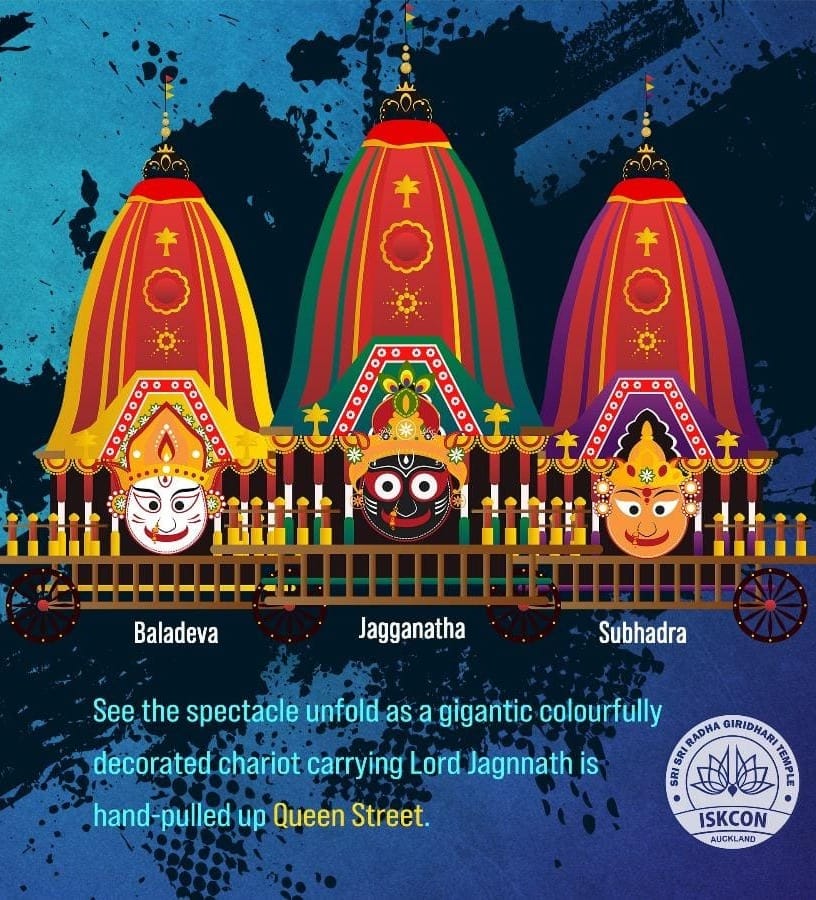
11 AM, Saturday 14th December 2024
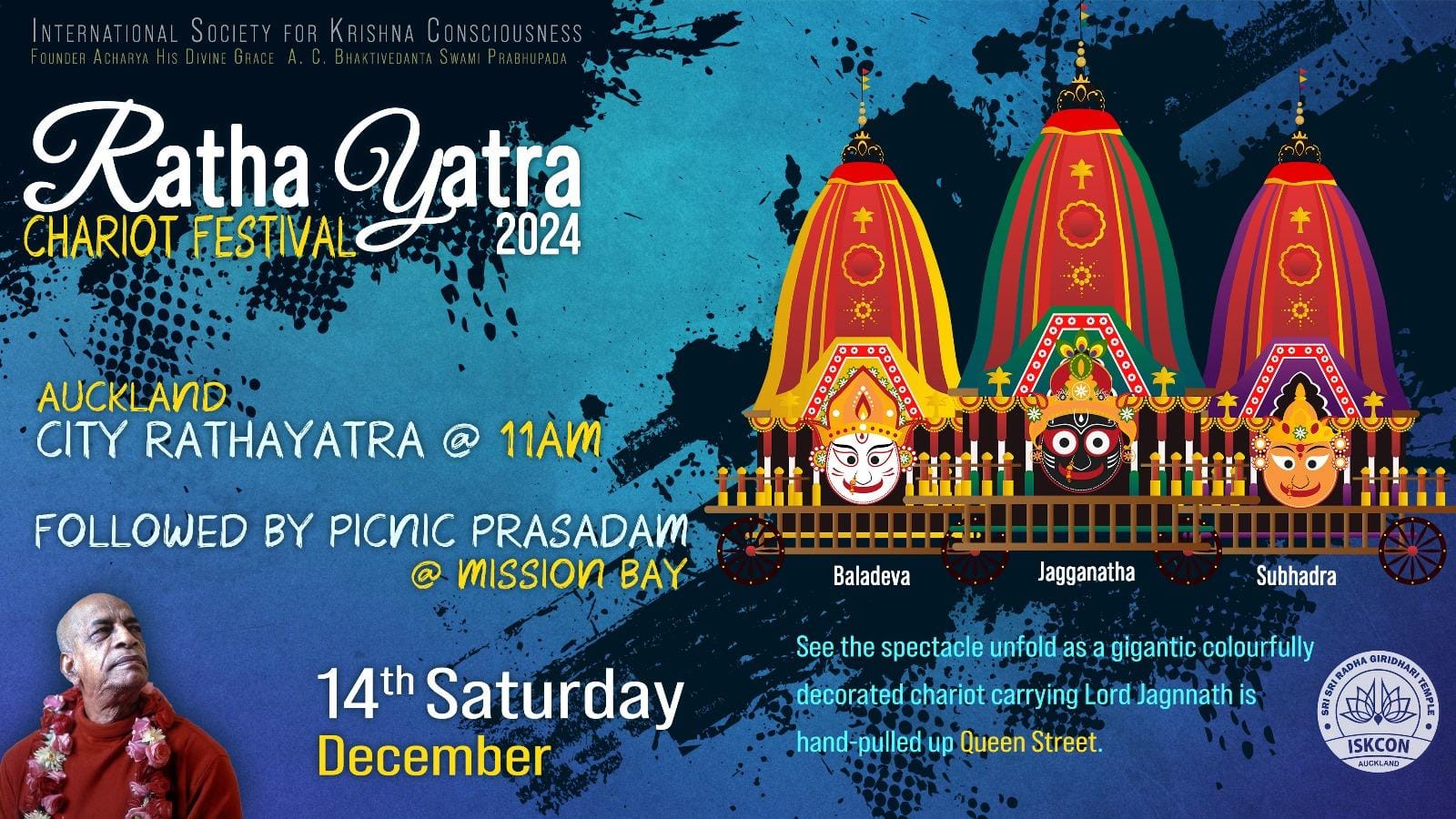
Often when I offer a lamp in this spiritually-charged season of Kartik, I am reminded of a time years ago when I was seated next to a woman on a plane who was visibly distressed and quietly weeping. I said to her, “You seem really upset. Is there anything I can do to help?” She […]
The post BOOK REVIEW: Prabhupada Memories Vol. 6 and Ambitious Spanish-Language Initiative appeared first on ISKCON News.
The Glorious Departure of a Glorious Vaishnava Devotees in Pennsylvania and all around the world are feeling deep sadness and a great sense of loss due to the sudden demise of His Grace Padmanabh Das Prabhu (Shri Prashant Patel, son of Shri Ashokbhai Patel and husband of Her Grace Prestha Devi Dasi), who left his […]
The post Remembering His Grace Padmanabh Das appeared first on ISKCON News.
On October 11, 2024, a magnificent Gaur-Nitai Shobha Yatra was organized in Karnal, Haryana. This grand procession saw the participation of thousands of people, all coming together to celebrate and express their devotion to Sri Sri Gaur-Nitai. The deities of Sri Sri Gaur-Nitai, standing in a joyful, dancing posture, were placed on a beautifully adorned […]
The post Gaur-Nitai Shobha Yatra and Week-Long Festival Inspires Thousands appeared first on ISKCON News.
A Message from Ambarisa Das and Braja Vilasa Das Dear Worldwide ISKCON Devotees and Congregation, Please accept our obeisances. All glories to Srila Prabhupada. We would like to wish you a happy Kartik month full of divine service to Lord Damodar, and hope you and your family are well and in blissful Krishna conscious spirits. […]
The post TOVP to Hold Nrsimhotsava Festival of Lights on Diwali appeared first on ISKCON News.
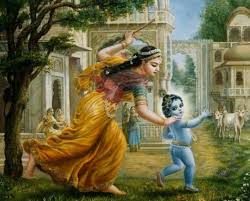
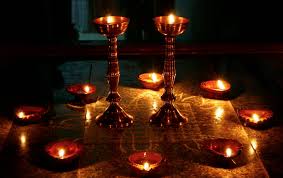
Taking place during October and November, Kartika month is revered as the holiest of the year, and it offers a unique opportunity for spiritual advancement.
From candlelit offerings to vows of austerity, Kartika is a time when devotees focus their hearts on Lord Krishna, specifically in His childhood form as Damodara, who was once famously bound with rope by His mother, Yashoda, to curb His mischievous activities.
One of the highlights of Kartika is the Damodarastakam prayer, which is sung daily by devotees as they offer a candle or ghee lamp to Krishna. This offering symbolizes the light of devotion, illuminating the dark corners of the soul. Families, young and old, gather to perform this simple yet profound ritual, creating a serene atmosphere of reverence and love.
Devotees also observe major festivals like Diwali, the Festival of Lights, which celebrates Lord Rama’s return to Ayodhya, and Govardhan Puja, commemorating Krishna’s lifting of Govardhan Hill to protect the residents of Vrindavan. These festivals, intertwined with the Kartika celebrations, add layers of joy, tradition, and worship.
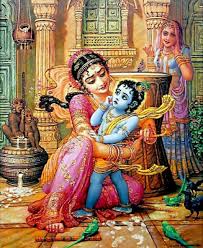

 We welcome you to this most auspicious place, the temple of Sri Sri Radha-Radhanath, on the most auspicious occasion of the beginning of Kartik, in the most auspicious association of Lord Krishna’s devotees. Kartik is also known as the month of Damodara (dama means “ropes,” and udara means “abdomen”), or Krishna who allowed Himself to be bound about the waist by the ropes of His devotee’s love.
We welcome you to this most auspicious place, the temple of Sri Sri Radha-Radhanath, on the most auspicious occasion of the beginning of Kartik, in the most auspicious association of Lord Krishna’s devotees. Kartik is also known as the month of Damodara (dama means “ropes,” and udara means “abdomen”), or Krishna who allowed Himself to be bound about the waist by the ropes of His devotee’s love.
Srila Rupa Gosvami compiled the law book of Krishna consciousness, the science of devotion, as the Bhakti-rasamrta-sindhu, translated by Srila Prabhupada in a summary study as The Nectar of Devotion. There the observance of Kartik is mentioned as one of the sixty-four items of devotional service. Rupa Gosvami quotes from the Padma Purana that just as Lord Damodara is favorably inclined toward His devotees, so the month of Kartik, which is also dear to Him, bestows great favor upon His devotees, even for a little service or a little practice. It is even said that the benefit gained for service performed in the last five days of Kartik is equal to that gained from service performed for the entire month. In other words, for a very small performance of devotional service in the month of Damodara, one gets a very big result—especially in Vrindavan. Also, Srila Prabhupada has explained that wherever the Deities of Radha and Krishna are installed, that is also Vrindavan. So, even here our devotional service will be magnified “one thousand times.”
Srila Prabhupada gave the example of a store holding a sale, when a customer can get a valuable item by paying a small amount. The month of Kartik is like a sale—a transcendental sale—when by a little investment of spiritual practice and service, you can receive great benefit. Of course, the management of the store hopes that you will come to appreciate its goods and patronize the store even after the sale is over. And we too hope that you will continue with your spiritual practices, or increased practices, even after the month of Kartik.
There is a special potency to the month itself. Just as certain times of the day, such as the brahma-muhurta, which begins one hour and thirty-two minutes before sunrise and continues until the sun rises, are more auspicious for spiritual progress and enhance the value of one’s practices, so too, Kartik is the most auspicious month of the year. Devotees try to take advantage of the facility offered by Kartik by on one side increasing their spiritual practices and doing extra service—chanting more rounds, reading more scripture, reciting more prayers, distributing more books, and making special offerings—and on the other side decreasing their material involvement, their sense gratification. As it is, we are in the four-month period of Chaturmasya, so every month we forgo a certain type of food, but in Kartik devotees may do extra austerities. They may eat only once a day, or give up sweet or fried foods, or rise earlier than usual, or whatever—work on some area of their spiritual life that they want to improve—and they get special mercy to fulfill their vows and improve their spiritual practices.
Today also is sarat-purnima, the full-moon night of the sarat season, the night on which Krishna played upon His transcendental flute at Vamsivata by the Yamuna River in Vrindavan and called the gopis to dance with Him. Now, we may take it that He played on His flute and in a figurative way called the gopis to dance with Him, but actually Krishna’s flute is one of His messengers, and so the gopis not only heard the beautiful, melodious sound of the flute, but also received the message that Krishna wanted to meet them. And because their only desire was to please Krishna, to fulfill His desires and make Him happy, they all went to Him not to fulfill any selfish desire of their own, but with the sole aim of fulfilling Krishna’s transcendental desire to dance with them.
Because the rasa dance superficially resembles the dancing of men and women in the material world, it can easily be misunderstood, and there are critics of Lord Krishna and Srimad-Bhagavatam and Krishna consciousness itself that find fault with the rasa-lila. I know religious groups outside of the Vedic tradition that criticize and challenge: “Oh, Krishna is a womanizer. How can you worship a god that enjoys with women?” They do not understand the pure love exchanged by Krishna and the gopis. In Sri Caitanya-caritamrta, Srila Krishnadasa Kaviraja Gosvami explains the difference between love, or prema, and lust, or kama. In lust, the person wants to gratify his or her own senses, whereas in pure love, the devotee wishes to satisfy Krishna’s transcendental senses. The two may resemble each other, but actually they are completely different.
kama, prema,—donhakara vibhinna laksana
lauha ara hema yaiche svarupe vilaksana
atmendriya-priti-vancha—tare bali ‘kama’
krsnendriya-priti-iccha dhare ‘prema’ nama
“Lust and love have different characteristics, just as iron and gold have different natures. The desire to gratify one’s own senses is kama, but the desire to please the senses of Lord Krsna is prema.” (Cc Adi 4. 164–165) Iron and gold are both metals, but there is a great difference between them, between their values. The pure love of the devotees for Krishna is like gold, and the lust of people in the material world who want to gratify their senses is like iron.
Another point of contention related to the Tenth Canto of Srimad-Bhagavatam is that the name of Radha is not mentioned. Some people challenge, “You are worshipping Radha and Krishna, Radha-Radhanath, but on what authority? We don’t find the name of Radha in the Bhagavad-gita or Srimad-Bhagavatam.” But in the five chapters that describe the rasa-lila, we find that after Krishna called the gopis and began to reciprocate with them, He disappeared. The gopis then plunged into feelings of separation from Krishna, and they began to search all over the Vrindavan forest for Him. In time they found two pairs of footprints: Krishna’s and a gopi’s. Then the other gopis, in their separation, exclaimed:
anayaradhito nunam
bhagavan harir isvarah
yan no vihaya govindah
prito yam anayad rahah
“Certainly this particular gopi has perfectly worshiped the all-powerful Personality of Godhead. Therefore Govinda was so pleased with Her that He abandoned the rest of us and brought Her to a secluded place.” (SB 10.30.28) “Because She worshiped Lord Hari better than all of us, She has gotten to be with Krishna now.” The word aradhito, which means “worshipped” or “perfectly worshipped,” refers to Radha, as confirmed by Srila Visvanatha Cakravarti Thakura and other acharyas. They explain that Her name does appear in the Vedas, Upanishads, and other Puranas, and that in this verse, although Her name is not mentioned explicitly, the superexcellent glories of Sri Radha are nonetheless proclaimed.
Ultimately Krishna also left Srimati Radharani, and when the other gopis came upon Her, they found Her in such a state of intense lamentation in separation that they felt, “Actually, She loves Krishna more.” There is a technical discussion of what actually took place in the rasa-lila, why Krishna left with Radharani and why eventually He left Her too. But His ultimate purpose was to reunite all the gopis, and when the other gopis saw Srimati Radharani in such a state of ecstasy in separation, they felt sympathetic toward Her; they did not feel any envy.
Thereafter, all the gopis searched for Krishna together. But they could not find Him anywhere, and finally they decided, “We cannot find Krishna unless He wishes to be found. We cannot force Him to come before us.” So, they considered, “How can we attract Krishna’s attention? How can we move Krishna to come back to us?” And they concluded that the best method was sankirtana, chanting the glories of Krishna together (along with crying).
When they returned to the banks of the Yamuna where they had originally met Krishna, they began to sing His glories—very beautiful songs in separation, known as the Gopi-gita. And when Krishna heard the gopis’ loving prayers, sankirtana, His heart was moved and He could no longer stay away from them. He came to them, reappeared before them, in His most attractive feature:
tasam avirabhuc chaurih
smayamana-mukhambujah
pitambara-dharah sragvi
saksan manmatha-manmathah
“Then Lord Krsna, a smile on His lotus face, appeared before the gopis. Wearing a garland and a yellow garment, He directly appeared as one who can bewilder the mind of Cupid, who himself bewilders the minds of ordinary people.” (SB 10.32.2)
Then followed an interesting dialogue between Krishna and the gopis. The gopis felt some transcendental anger, because Krishna had abandoned them. After all, He had called them to Him and they had risked everything to go to Him in the dead of night, and then Hehad left them. So they wanted Him to explain why.
In a most tactful and intelligent way, they began, “There are three kinds of lovers.” They presented three categories of lovers, three different ways that lovers deal with others, and asked Krishna to explain them. Indirectly, they were asking Krishna, “In which category do You fit?”
In one category are people who reciprocate exactly with the other party. In other words, “If you are kind to me, I will be kind to you; if you ignore me, I will ignore you.” Krishna said, “They are like merchants. They give only with the expectation of return, and they give only as much as they expect in return. Actually, they are selfish.”
In the next category are those who love the other even though the other does not love them. For example, at least in principle, parents love their children no matter what the children do. The children may not even appreciate the parents’ service, but the parents go on loving and serving them. And even better than parents are devotees, because although parents serve their own children, devotees love and serve everyone. Whether others appreciate them or not, they try to help everyone. Krishna said, “Those who love others even if others don’t love them in return are following the true path of dharma and are the true friends ofhumanity.”
In the third category are those who don’t reciprocate even when others love them. The first category is “I reciprocate only if you love me.” The second category is “Even if you don’t love me, I love you.” And the third category is “Even if you love me, I don’t reciprocate.” So, the gopis wanted Krishna to admit that He was in the third category. They did not want to say it themselves, but they wanted to hear it from Krishna’s own mouth. They wanted to trap Him with their subtle network of wise and clever words.
Now, within the third category there are four divisions. There is the atmarama: he is completely self-satisfied. Even if you love him, he won’t reciprocate, because he is self-satisfied; he is situated in transcendental bliss. Then there is the apta-kama: he has desires, but they are already satisfied, so he doesn’t need you. Even if you love him, he won’t reciprocate. Then there is the third division, akrta-jna: he is ungrateful. And then there is the last division, guru-druhah. In the first three, “You love me, but I don’t reciprocate; I remain indifferent,” but in this last category, guru-druhah, “You love me, and I am not just indifferent to you; I am inimical.” Actually, the gopis wanted Krishna to admit that He had been ungrateful.
Ultimately Krishna had to respond to the gopis’ question, and His answer was, “I did not neglect you, nor was I indifferent to you. I was always thinking of you. But in order to increase your love for Me, I hid Myself from you.” Krishna gave the example of a poor man who gains wealth and then loses it. He will be so anxious that he can think of nothing except his lost treasure: “What happened to my money? How can I get it back?” Krishna said, “So, I was reciprocating with you, because your desire was to increase your love for Me, and by hiding Myself from you I created a situation by which your attachment for Me would increase. So I was reciprocating with you.” Although Krishna’s argument sounded good, it did, however, contain one defect: the gopis’ love was already unlimited, and even so, by its very nature it was always increasing. So that could not have been the real reason.
Again, there is an intricate and elaborate discussion by the acharyas about the dialogue between Krishna and the gopis, but at the very end Krishna admits defeat. He says,
na paraye ’ham niravadya-samyujam
sva-sadhu-krtyam vibudhayusapi vah
ya mabhajan durjara-geha-srnkhalah
samvrscya tad vah pratiyatu sadhuna
“Actually, I am unable to repay My debt for your service to Me even with the prolonged life of Brahma, because you have given up everything for Me. You have given up family ties, which are so difficult to break. You have given up the dictates of the world, of the Vedas, and of your relatives. You have forsaken everything for My sake—which I could not do for you. You have given up all other relationships for Me, but I could not do that for you. I still have My father and mother and friends. You came running out of your houses in the middle of the night, but I sneak out and return in the morning so that no one catches Me. But you, with complete abandon, have come to meet Me without any consideration of the consequences. And I have so many devotees with whom I reciprocate: devotees in madhurya-rasa, in vatsalya-rasa, in sakhya-rasa, in dasya-rasa, and in santa-rasa. I also reciprocate with the sadhakas in the material world who are struggling and trying to become devotees. I reciprocate with everyone who approaches Me. But you love only Me. So I cannot equal your love. I admit it: I can never repay My debt to you.” And He concluded, “I am defeated by your love.”
The gopis were so touched by Krishna’s words that they thought, “Now He has defeated us! We could not admit to Him that He defeated us, but He has admitted to us that we defeated Him. So He has defeated us.” Of course, this is all on the platform of transcendental love. And it is said that later, when Krishna left Vrindavan to go to Mathura and Dvaraka and the gopis were left in separation from Him, they would think of His words to them—na paraye ’ham—and that would give them solace to bear the separation. Here we come to another subtle and intricate discussion, because even in separation from Krishna they experienced His presence.
After hearing Krishna’s reply, the gopis were appeased, and so He began the pastime of the rasa dance. All of the gopis were dancing in a circle, and Krishna expanded Himself to be next to each one. Each gopi felt, “Krishna is with me alone,” and each was completely satisfied by Him.
One of our devotees has envisioned the image of the rasa dance as a symbol for interfaith harmony. It is a symbol that is most appropriate, especially for a diverse country such as South Africa.The idea is that there were so many gopis, and each was individual, but that Krishna was by the side of each one, reciprocating with each perfectly. He accepted all of them, and all of them accepted each other, and there was complete harmony in this dance of divine love—not only between Krishna and the gopis, but also among the gopis themselves. Likewise, different worshippers serve God in different ways. They have different practices and rituals, and different scriptures and languages. But God reciprocates with all of them. And if they can come into harmony, not only with God but also with each other, in the dance of divine love, there can be complete harmony in the world.
So, today is a most sacred occasion: the beginning of kartik-vrata, and sarat-purnima, the night Krishna enjoyed His rasa-lila with the gopis—after removing Himself from their presence in order to demonstrate to the world, in their separation from Him, their supreme love.
Thank you very much.
Hare Krishna.
[A talk by Giriraj Swami, October 17, 2005, Sri Sri Radha-Radhanath Temple, Durban, South Africa]
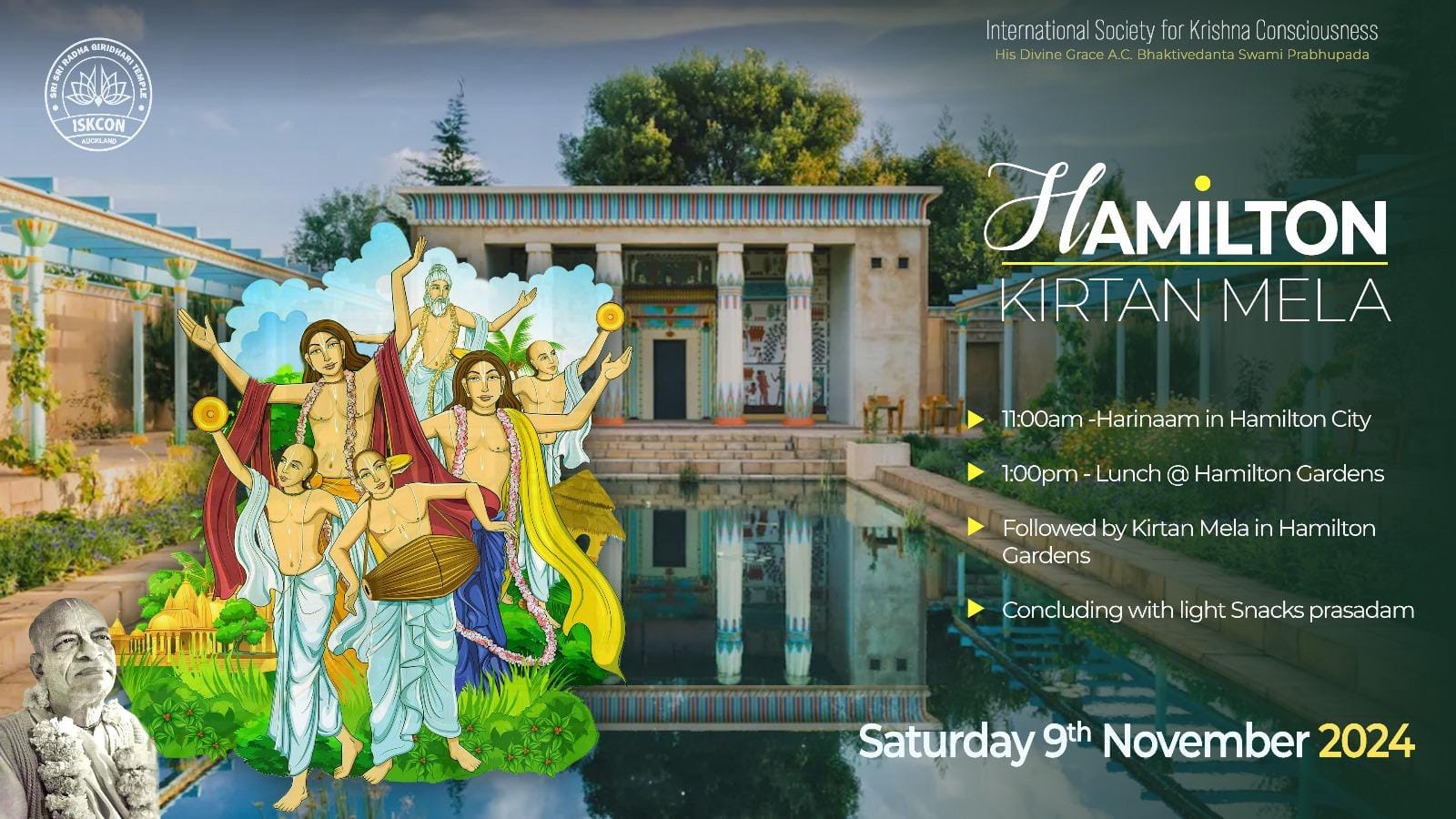
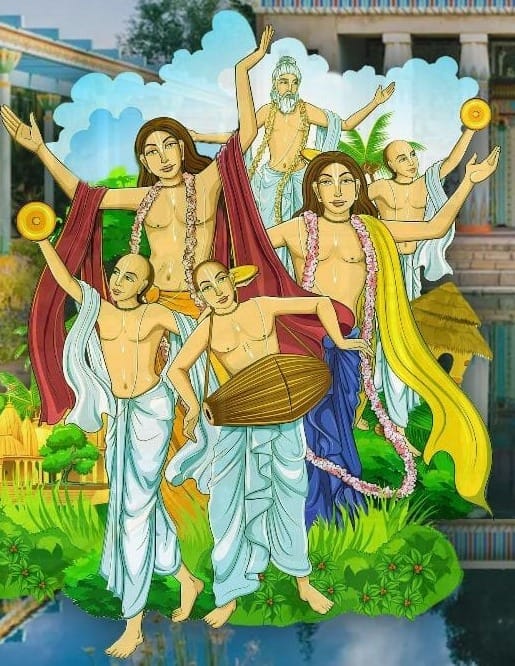
Saturday 9th November 2024
An online workshop called Small Is Powerful, led by Mahatma Das, will be held in two groups on November 22-23, 2024, and November 30-December 1, 2024. This workshop, offered in multiple languages including English, Spanish, Portuguese, Chinese, and Russian, will guide participants in exploring how humility and self-honesty shape and influence their spiritual journey. Srila […]
The post Mahatma Das to Offer Multi-Language Online Workshop Focused on Humility and Self-Honesty appeared first on ISKCON News.
Visakha Devi Dasi with Nimai Dasi and Braja Vadhu Dasi at the Women’s Faith Forum. On October 15th, 2024, Visakha Devi Dasi, Temple President of ISKCON Bhaktivedanta Manor, was invited to speak at the latest event by the UK Women’s Faith Forum(WFF). The gathering, held in Parliament, hosted over 50 women of faith from various […]
The post Manor Temple President Invited to Speak at Women’s Faith Forum Event in UK appeared first on ISKCON News.
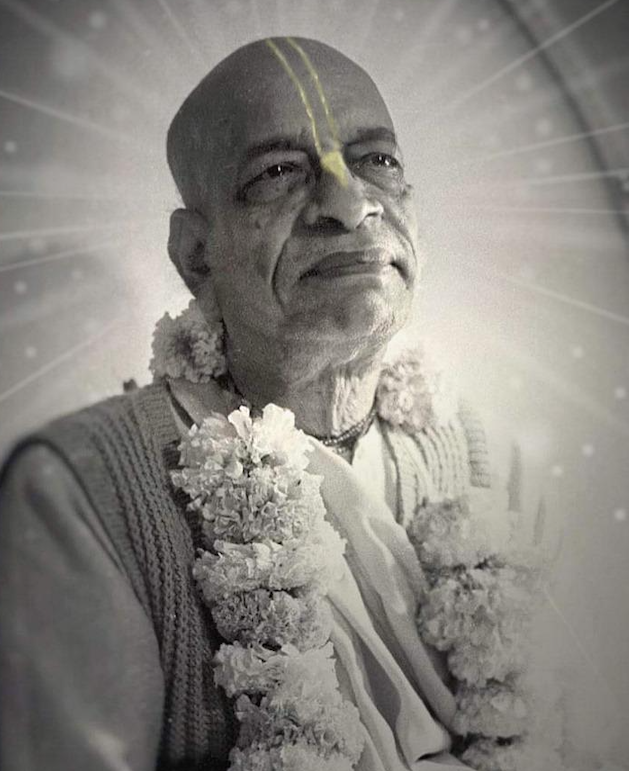
Wednesday 6th November 2024
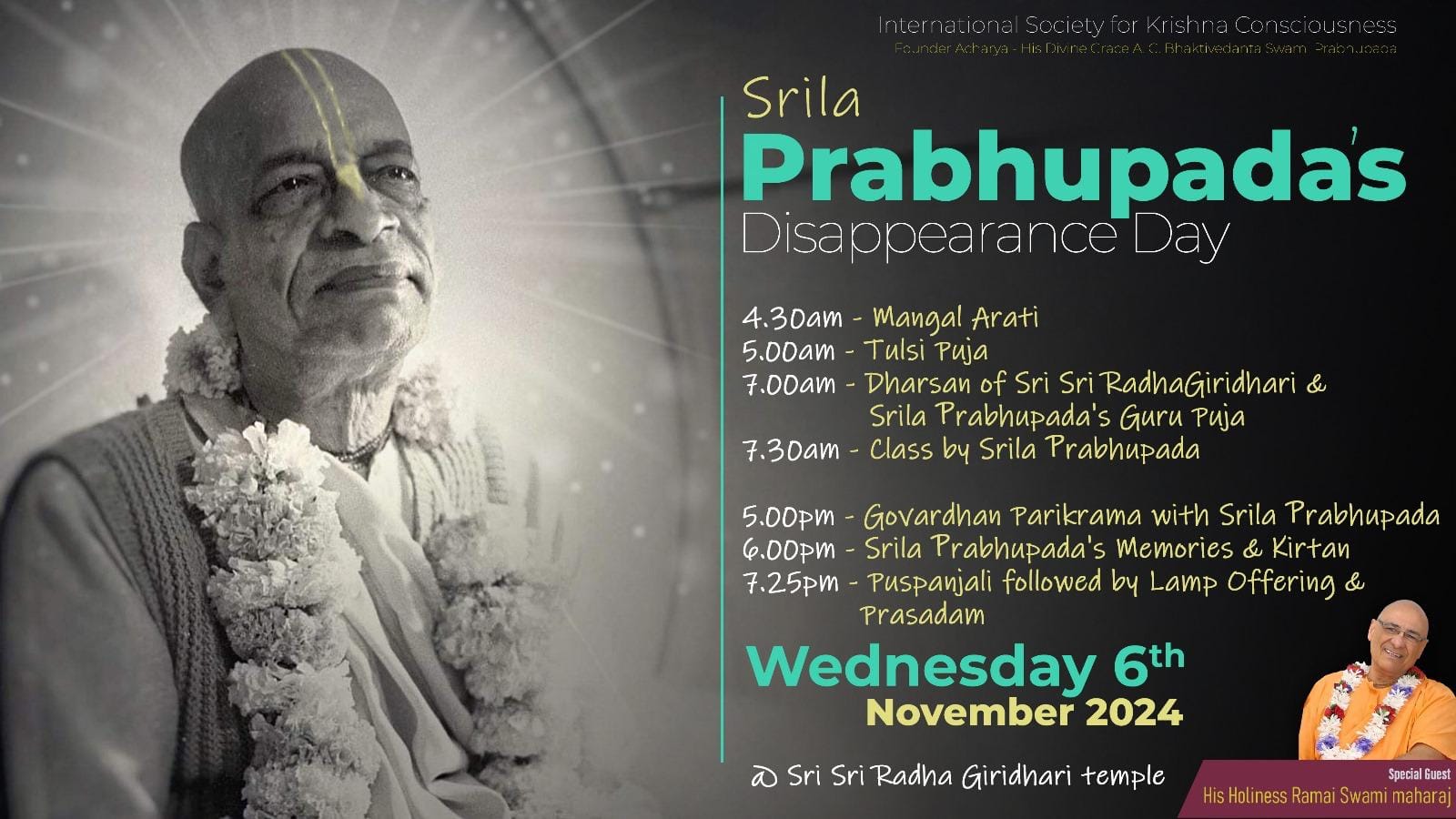
Mahaprabhu Dasa, Temple President of ISKCON Soweto with Bhakti Narasimha Swami. On September 28th, 2024, the vibrant streets of Soweto came alive with the joyous sounds of Hare Krishna chanting as devotees and members of the local community gathered to celebrate the 17th annual ISKCON Soweto Rathayatra Festival. This year’s event was a spiritual spectacle […]
The post Celebrating 17 Years of Devotion: ISKCON Soweto’s Rathayatra Marks a New Chapter appeared first on ISKCON News.
The US Department of Homeland Security (DHS) announced that it will distribute $210 million in Nonprofit Security Grant Program (NSGP) funds through the Federal Emergency Management Agency as the second tranche of additional funding that the Biden-Harris Administration secured to protect faith-based institutions and nonprofit organizations against targeted attacks. This funding will be made available […]
The post DHS Announces Funds for US Faith-Based Orgs to Improve Safety and Security appeared first on ISKCON News.
On October 10, 2024, Kalakantha Das, the GBC Minister of Cow Protection and Agriculture, delivered an impactful presentation at the Virtual C20 Conference, a side event focusing on food systems, hunger, and poverty. He emphasized that integrating spirituality into agroecology, agroforestry, and crop diversification is essential for addressing global food challenges and environmental crises. By […]
The post Kalakantha Das Explores Spirituality and Sustainability at C20 Conference appeared first on ISKCON News.